Here’s the latest in exciting new picture books here in Aotearoa, reviewed by Nida Fiazi – including the debut picture book from The Sapling’s very own co-editor Thalia Kehoe Rowden. There’s tries to score, oceans to clean up, voices to find and scary poems to read with your very best spooky voice!
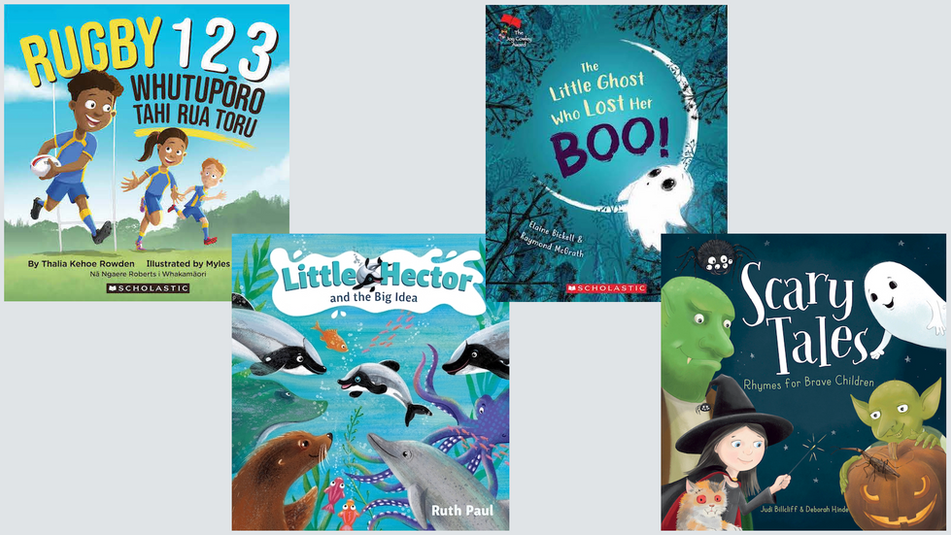
Rugby 123 / Whutupōro Tahi Rua Toru by Thalia Kehoe Rowden, illustrated by Myles Lawford, translated by Ngaere Roberts (Scholastic)
I couldn’t quite believe my eyes when I saw this book, written by The Sapling’s very own Thalia Kehoe Rowden! Rugby 123/Whutupōro Tahi Rua Toru is a bilingual (Māori and English) counting and rhyming book about a kids’ rugby game. We get to count balls, rugby boots, match officials, grandparents, cousins and so much more before sending the characters off to bed after their big game.
The numbers on each spread are accompanied by two lines each of English and Māori, and if you’re only fluent in one of those, that means you get to read and learn the other at the same time. The English text is written in rhyme but from what I can tell, as someone who doesn’t speak te reo Māori, the Māori text is retold in prose (by Ngaere Roberts) instead. I speak two languages so I know how difficult it is to translate something exactly as is from one language to another. I’m glad they didn’t try to force the rhyme in te reo Māori and chose to change the form to accommodate the language instead.
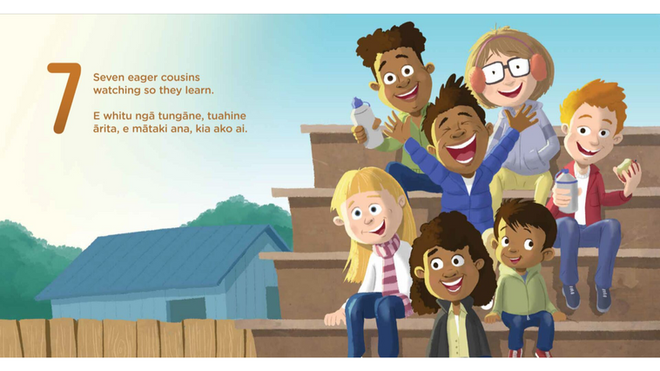
I’ve read my fair share of bilingual children’s books and unfortunately, a lot of them tend to visually prioritise one language (usually English) more than the other, as if to imply that that language is more important. That’s not the case with this book: both languages are in the same font, the same size and take up the same amount of space, and on the one page where there are three lines instead of two, it’s in Māori!
Myles Lawford’s colourful illustrations feature a whole cast of diverse characters, and when I say diverse I don’t just mean in terms of the colour of their skin. The book is bursting with people of various shapes, sizes, genders and ages too! There are female rugby players playing with the boys and match officials in bubblegum pink uniforms. If you pay close attention, you might even spot another New Zealand book centred around rugby on one of the pages.
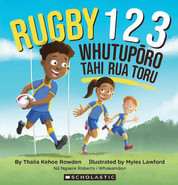
Rugby 123 / Whutupōro Tahi Rua Toru
By Thalia Kehoe Rowden
Illustrated by Myles Lawford
nā Ngaere Roberts i whakamāori
Scholastic NZ
RRP $17.99
Little Hector and the Big Idea, by Ruth Paul (Penguin NZ)
The Arctic is melting, the Amazon is burning, coral reefs are dying, our oceans are teeming with rubbish, Earth is predicted to become a desert by 2050 if global warming isn’t curbed. As scary as it all sounds, this is our reality, one we’ve brought our kids into. And if we’re all on the brink of extinction, they deserve to know.
But how do we initiate the climate-change conversation in a sensitive and age-appropriate way? The trick is to focus on solutions, taking action and highlighting success stories (even fictional ones) like author-illustrator Ruth Paul’s Little Hector and the Big Idea. This is the second instalment in Paul’s series about the adventures of a dolphin named Hector (after New Zealand’s smallest, and endangered, marine dolphin). This time, we join Hector as he is faced with dangerous fishing nets and plastic rubbish in the ocean that keep spoiling his games and making his friends sick.
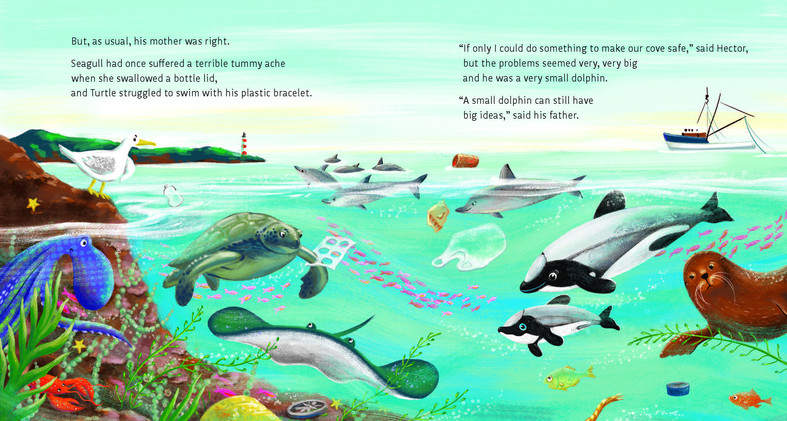
What I love about this book is that it’s an honest reflection of our own initial reactions to being faced with problems that are a lot bigger than us. When Hector first realises the issue, he can’t help but feel overwhelmed. He’s only one dolphin and a very small one at that – how can he possibly fix such a big problem? But Hector moves past his helplessness and shows readers that with the help of others, we can solve even the biggest of problems. This may not seem like a big deal, but the shift in focus alone can have a huge impact on the way kids think about these kinds of issues and their personal role in changing them.
Aside from the awesome message, I enjoyed the softer illustrations and bright colours in this book. They really brought the blue ocean setting to life. The rare human cameos also made me super excited because there were so many people of colour! I had a lot of fun with the assonance and alliteration weaved throughout the narrative. It’s a clever way of maintaining a lighter tone, even while dealing with such a heavy topic.
All in all, this book is a great way to encourage children’s interest in the environment, and help foster a sense of appreciation and protectiveness for it. The inside of the back cover even shows us how! It’s filled with bits of advice on the little things we can do in our everyday lives to help Hector keep the ocean clean.
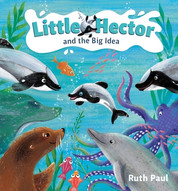
The Little Ghost Who Lost Her Boo! by Elaine Bickell, illustrated by Raymond McGrath (Scholastic NZ)
This interactive rhyming book follows little Ghost on a quest to find her lost BOO. Along the way she meets a number of different animals: an owl, a pigeon, a rooster, and a cow, after mistaking their whoo, coo, cock-a-doodle-doo and moo as her BOO. They kindly offer little Ghost their sounds, and although they’re quite similar, they’re nowhere near as scary as her BOO. In an interesting turn of events, little Ghost turns to you, the reader, for help. Can you find her BOO?
This book is a super fun way to teach the little ones animal sounds. It’s packed with wonderful onomatopoeia that they can’t help but repeat. On top of that, the repetitive set up of the narrative combined with the rhyming text makes it easier to predict what’s going to happen next. This may not be the most mentally-stimulating experience for parents, but the familiarity of the content is an effective way to boost children’s confidence when reading. My only gripe is that the book ignores the rule of thirds and adds in a fourth animal which messes with the balance of the narrative and makes the story feel like it’s dragging, even though it’s not.
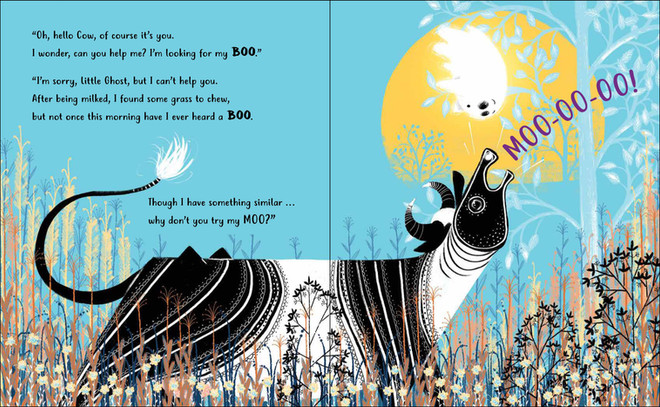
I found the illustrations really cool because somehow, they manage to find that sweet medium between dark but not scary, clean but not simplistic, and colourful but not garish. Raymond McGrath’s decision to stick to a limited colour palette of blues, greens, and oranges also makes the white of little Ghost stand out and (unironically) brings her to life on the page.
Personally, I’m a sucker for hidden deeper messages in children’s books and this one definitely delivers. Little Ghost’s journey and her interactions with the other animals teaches readers about the importance of perseverance, of not giving up. More importantly, it teaches them to stay true to themselves.
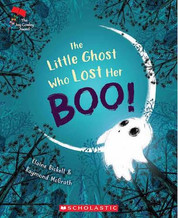
The Little Ghost Who Lost Her Boo!
By Elaine Bickell
Illustrated by Raymond McGrath
Scholastic NZ
RRP $18.99
Scary Tales – Rhymes for Brave Children by Judi Billcliff, illustrated by Deborah Hinde
This collection of spooky rhymes couldn’t have come at a better time, with Halloween just around the corner. It’s jam-packed with fabulously scary twists on classic nursery rhymes: Mary has a little ghost, Humpty Dumpty has transformed into a little Frankenstein and Little Bo Peep meets an old witch with a bad twitch and seriously dodgy-looking wand. The book also features some new rhymes such as ‘Liar, Liar’ and ‘My Dog Turned into a Vampire’, that give me major Brothers Grimm vibes (in the best way possible).
One of my favourites from this collection has to be ‘Old Count Dracula had a Vault’, which is a Kiwi take on the classic, ‘Old Macdonald Had a Farm’. The Kiwi spin comes from replacing the traditional E-I-E-I-O with the basic Maori vowel sounds A-E-I-O-U that every kid in New Zealand has sung at one point in time.
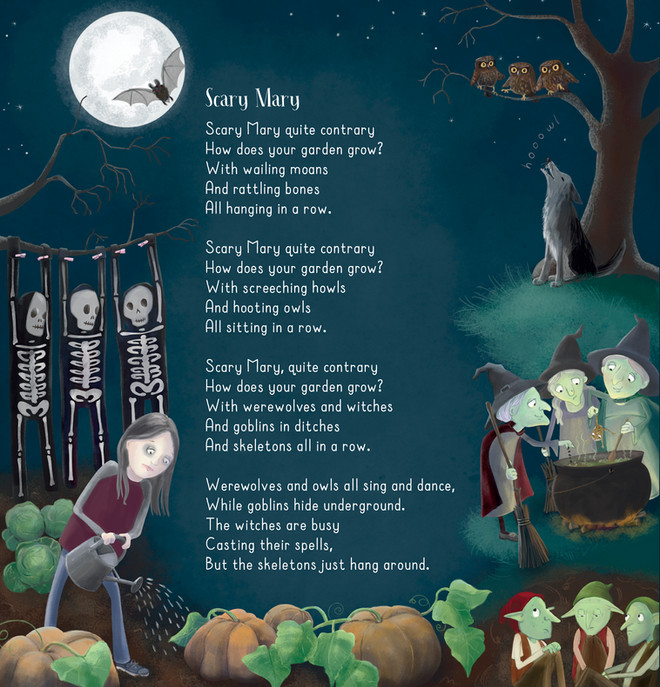
Deborah Hinde’s illustrations are the perfect combination of scary and endearing. There’s just the right amount of curves and pointy edges and of red eyes and fluffy white sheep– they match the tone of the text perfectly. I also really like that there’s a variety in the sizes of the illustrations: some take up a full double spread, whereas others are like little pockets of images placed strategically around the text.
I’ve always considered rhyming to be quite tricky, and I think that for the most part, the ones in this collection read smoothly. But there were a couple of moments where I stumbled because of an extra syllable or two or because I was expecting a rhyme in certain places that there weren’t any. This wasn’t a massive inconvenience and it didn’t take away from the fun of trying to match the spooky rhymes with the originals they were based on.
There’s even a bonus ‘Did You Know’ sections at the end filled with facts about the animals and characters that were featured in the rhymes. On top of that, there’s also an activity page (with a section dedicated to some scarily good jokes) that is sure to entertain the little ones.
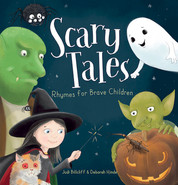
Scary Tales – Rhymes for Brave Children
By Judi Billcliff
Illustrated by Deborah Hinde
PictureBook Publishing
RRP $19.99

Nida Fiazi has worked in the New Zealand book industry for the past five years as a poet, editor, reviewer, and advocate for better representation in literature. She is a Hazara Kiwi Muslim and a former refugee based in Kirikiriroa. Her work has appeared in Issue 6 of Mayhem Literary Journal, the anthology Ko Aotearoa Tātou | We Are New Zealand, and Poetry NZ Yearbook 2021. She is currently penning an opera with Tracey Slaughter.



